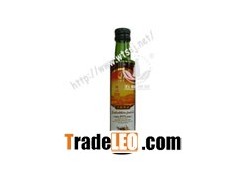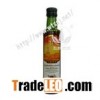Chemical constituents
Oils from sea-buckthorn seeds and pulp differ considerably in fatty acid composition. Whilelinoleic acid and a-linolenic acid are the major fatty acids in seed oil, sea buckthorn pulp oil contains approximately 65% combined of the monounsaturated fatty acid, palmitoleic acid, and the saturated fatty acid, palmitic acid. Few other vegetable oils contain a similar quantity of these fatty acids. Both the seed and pulp oils are rich in tocopherols, tocotrienols and plant sterols. In addition, the pulp oil contains especially high levels of carotenoids.
Characteristics
Due to its unique botanical and nutritional properties, and there being no reported evidence of sea-buckthorn oil causing adverse reactions or negative side effects, the oil is also used as a natural agent that may benefit diseases of mucous membranes including aphthous ulcers, esophagitis, acid reflux, and peptic ulcers, as well as dermatological diseases and skin conditions.
Uses
seabuckthorn oil

SHANXI MOUNT WUTAI SEA BUCKTHORN PRODUCTS CO.,LTD
Health care, functional food






